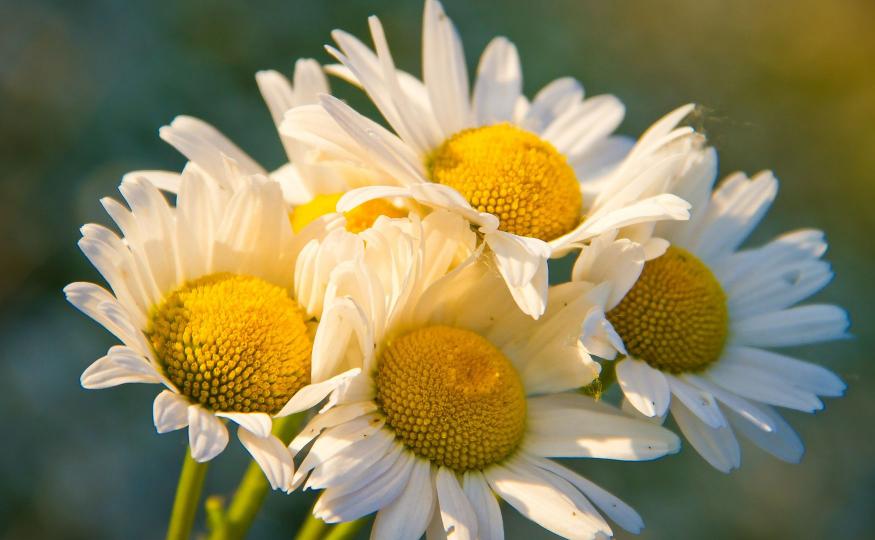
Flowers are more than just pretty petals—they’ve been used for centuries in natural medicine and holistic healing. Known as healing flowers, these flower therapy offer a wide range of benefits, from calming stress and anxiety to aiding digestion and improving skin health.
In this article, we’ll explore 11 powerful healing flowers and exactly how they can help bring balance, relaxation, and wellness to your life—naturally.
1. Lavender – The Stress Reliever
Benefits:
Lavender is perhaps the most well-known healing flower. Its scent is widely used in aromatherapy to reduce anxiety, promote relaxation, and improve sleep quality. You’ll find lavender in essential oils, bath products, teas, and even calming sprays.
How to Use:
• In essential oil diffusers
• As dried flowers in pillow sachets
• Steeped in tea for relaxation
2. Chamomile – The Gentle Soother
Benefits:
Chamomile flowers are famous for their gentle calming effects, especially when brewed into tea. They help reduce inflammation, ease digestive discomfort, and promote restful sleep.
How to Use:
• Drink as tea before bed
• Apply cooled chamomile tea to skin irritations
• Use in bath soaks to calm sensitive skin
3. Rose – The Heart Healer
Benefits:
Roses aren’t just for romance—they’re powerful mood enhancers. Rose petals and rose oil have anti-inflammatory and anti-depressant effects. They’re also great for skin, especially in toners and masks.
How to Use:
• Rosewater as a facial toner
• Dried petals in tea blends
• Add fresh petals to your bath for a luxurious soak
4. Calendula – The Skin Savior
Benefits:
Calendula (also known as marigold) is a healing powerhouse for the skin. It soothes minor wounds, rashes, and eczema with its powerful anti-inflammatory and antifungal effects.
How to Use:
• Apply calendula cream or ointment
• Brew in hot water for a calming and gentle herbal rinse
• Use as an ingredient in DIY lip balms or salves
5. Jasmine – The Mood Booster
Benefits:
Jasmine flowers are known for their sweet scent, which is linked to mood enhancement and increased alertness. The flower also has aphrodisiac and anti-anxiety effects.
How to Use:
• In aromatherapy or massage oil
• Add dried jasmine to tea blends
• Use as a natural perfume or linen spray
6. Hibiscus – The Heart Supporter
Benefits:
This vibrant flower isn’t just eye-catching—it’s loaded with antioxidants and supports cardiovascular health. Hibiscus tea supports healthy blood pressure and boosts cholesterol balance.
How to Use:
• Brew dried hibiscus petals into tea
• Use in skincare for its firming effect
• Add to homemade herbal syrups or tonics
7. Echinacea – The Immune Booster
Benefits:
Echinacea is a staple in herbal remedies for cold and flu. This spiky pink flower helps strengthen the immune system and fight off infections.
How to Use:
• Take as a supplement or capsule
• Brew into immune-boosting tea
• Use as a tincture during seasonal illness
8. Passionflower – The Anxiety Reducer
Benefits:
Passionflower is often used to treat insomnia, anxiety, and nervous tension. It’s a natural sedative that gently relaxes the nervous system.
How to Use:
• Steep in tea for calming bedtime routines
• Combine with valerian root or lemon balm for added effect
• Use in tincture form for concentrated benefits
9. Dandelion – The Detox Flower
Benefits:
Dandelions may be weeds in your yard, but they’re powerful healers. The flowers and roots support liver health, aid digestion, and detox the body.
How to Use:
• Drink dandelion tea or coffee alternatives
• Add young petals to salads
• Use root tincture for liver support
10. Yarrow – The Wound Healer
Benefits:
Yarrow has antiseptic and anti-inflammatory properties. It’s traditionally used to stop bleeding, heal wounds, and reduce fever.
How to Use:
• Apply yarrow salves on cuts and bruises
• Use in herbal compresses for swelling
• Drink yarrow tea to relieve fever or cramps
11. Lotus – The Spiritual Calmer
Benefits:
Used in Ayurvedic medicine and meditation practices, lotus flowers promote calm, clarity, and emotional balance. Lotus extracts nourish the skin by providing hydration and promoting purification.
How to Use:
• Use lotus extract in skincare
• Brew lotus tea for emotional grounding
• Meditate with dried petals nearby for spiritual support
How to Use Healing Flowers in Daily Life
Incorporating healing flowers into your routine doesn’t require a herbalist’s degree. Here are some easy ways to enjoy their benefits:
• Teas & Tinctures: Drink herbal flower infusions for internal healing.
• Baths & Compresses: Soak in warm water with flower petals or use a cooled herbal compress on the skin.
• Essential Oils: Use flower-based oils in diffusers or for massage therapy.
• Skincare & Salves: Many healing flowers are found in creams, masks, and ointments.
• Fresh Flowers in Your Home: Just having them around lifts your mood!
Flower Therapy: Nature’s Way to Heal
The idea of flower therapy isn’t new—it dates back thousands of years across various cultures. Whether it’s Ayurvedic medicine, Traditional Chinese Medicine, or ancient Greek healing, flowers have always had a central role in wellness.
The best part? Healing flowers are natural, beautiful, and full of life-affirming energy.
Final Thoughts
Healing flowers are more than fragrant décor—they’re gifts from nature that restore balance and beauty both inside and out. From easing anxiety to boosting your skin glow, these blooms offer natural solutions to modern-day stress.
Whether you sip them in tea, breathe in their aroma, or simply admire their beauty, the healing power of flowers is always close by.
🌸 Looking to share soothing vibes with someone dear—or even yourself?
Explore wellness-inspired bouquets at inbloom.id and bring the healing power of flowers into your life today.
